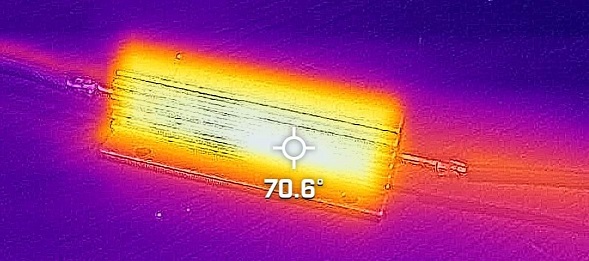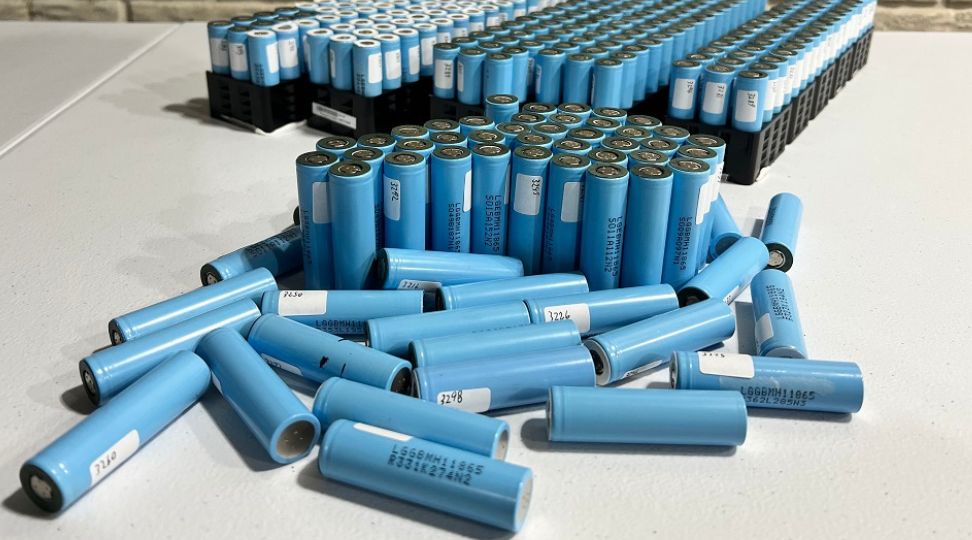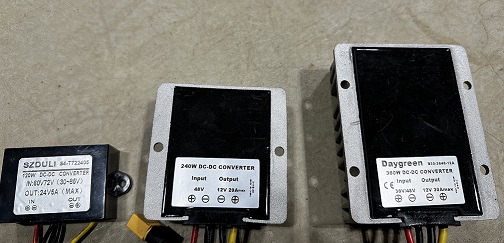
How Do You Calculate Internal Resistance?
Table of Contents
Internal resistance is calculated by measuring the load resistance (Rload), open-circuit voltage (V1), loaded voltage (V2), and then plugging them into a formula.
This is the formula for calculating internal resistance: ISR = ((V1 - V2) / V2 ) x Rload
The measure of Internal resistance is one of the most important measurements of a battery you can have. With the internal resistance, you can calculate what the exact voltage drop will be at a given current. You can also calculate how much power will be lost as heat within the cells. Using those figures you can calculate the exact efficiency of a given cell or battery.
Steps To Calculate Battery Internal Resistance?
There are several ways to test a battery, but the most useful metric for determining battery health is by far its internal resistance. There are a lot of ways to get to this number, but here is my favorite one:
Step 1: Measure the Load Resistance (Rload)
Before you begin the test, you need to know the resistance of the load resistor (Rload) that you will be using. This value is typically provided by the manufacturer or can be measured using an ohmmeter. Make a note of this resistance value, as it will be used in the calculations later.
Step 2: Measure the Open-Circuit Voltage (V1)
Use a voltmeter to measure the open-circuit voltage (V1) of the battery or voltage source. This is the voltage across the terminals of the battery when it is not connected to any external load (i.e., no current is being drawn from it). Record this voltage value for use in later calculations.
Step 3: Connect the known load resistor (Rload) across the terminals of the battery.
This will allow current to flow from the battery through the load resistor. You are going to want to do steps 3 and 4 in quick succession. While the load resistor is connected, it will be heating up rapidly. If you attach it for just a second or two, you will be able to get a good, stable reading without it getting too hot. After that, move the resistor to a safe place, because it takes some time for heat generated in the core to make its way to the surface.
Step 4: Measure the Loaded Voltage (V2)
Use a voltmeter to measure the loaded voltage (V2) of the battery. Again, do this part quickly, but let the voltage stabilize before you take note of the measurement. This should take just a second or so.
Using the measurements you got in the above steps, you can calculate the internal resistance of the battery like this:
ISR = ((V1 - V2) / V2 ) x Rload
In this formula:
ISR is the internal resistance of the battery.
Rload is the known resistance of the load resistor (measured in Step 1).
V1 is the open-circuit voltage of the battery (measured in Step 2).
V2 is the voltage across the load resistor (measured in Step 3).
The ISR, or internal series resistance, is the opposition to the flow of electric current within the battery itself. It is responsible for the voltage drop observed when the battery is connected to an external load. The voltage drop is equal to the difference between the open-circuit voltage and the voltage across the load (V1 - V2), and it is caused by the internal resistance of the battery.
[[ aff type=aff ~ link=https://amzn.to/3JAaOT5 ~ title=`YR1035+ 4 Line IR Tester ` ~ image=https://admin.cellsaviors.com/storage/yr1035 ir tester.jpg ~ description=If you are looking for a simple way to test IR, these standalone IR testers are the way to go!`` ~ height=small ~ buttonText=`Check Price` ]]
Load Resistors Get Hot When Calculating Internal Resistance
It’s super important to make sure that the load resistor used in the test does not exceed its rated power handling capacity. Resistors are rated for a maximum amount of power that they can safely dissipate as heat. Exceeding this rating can cause the resistor to overheat, potentially damaging the resistor and posing a safety hazard.
The power dissipated by the load resistor can be calculated using the formula:
P = I² x Rload
In this formula:
P is the power dissipated by the load resistor in watts (W).
I is the current flowing through the load resistor in amperes (A).
Rload is the resistance of the load resistor in ohms (Ω).
WARNING: if there is more than 10W of power dissipation in the load resistor, it will get very hot, which could be dangerous. It's important to choose a load resistor with a power rating that is higher than the expected power dissipation to ensure safe operation.
To avoid overheating the load resistor, the test can be performed quickly. The voltage measurements (V1 and V2) do not need to be taken over an extended period; they can be recorded in a matter of seconds. By minimizing the duration of the test, you can reduce the risk of overheating the load resistor while still obtaining accurate measurements.
So, for the example of a 36V and a load resistance of 12 ohms (three 3 Ohm resistors in series), we can calculate the current as follows:
I = 36V / 12Ω
I = 3A
Now that we know the current flowing through the load resistor, we can calculate the power dissipated by the load resistor like this:
P = I² x Rload
Which is..
P = (3A)² x 12Ω
P = 9A² x 12Ω
P = 108W
Therefore, the power dissipated by the load resistor is 108 watts. That means each load resistor is seeing 36 watts. So if you are using a 50W rated load resistor, it means that the amount of test current won't damage the load resistor but they will still get very very hot if you do the test for more than 1 or 2 seconds. So, be quick with your measurements. :)



